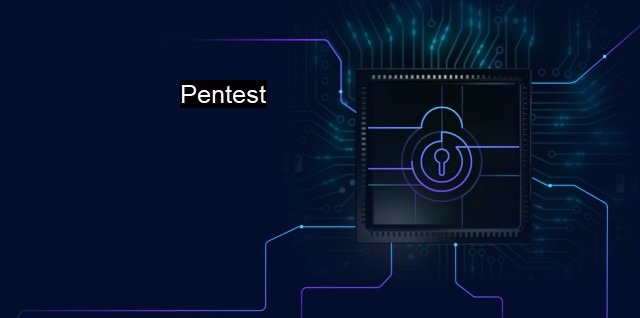What is Pentest?
Mitigating Cyber Threats: An Introduction to Penetration Testing and Its Role in Cybersecurity
"Pentest" , short for penetration testing, is a practice in the field of cybersecurity intended to strengthen and secure a system against potential attacks. In a world where digitization is increasingly becoming the norm, cybersecurity measures like pentesting are an investment that organizations, individual users, and governments should consider indispensable.Penetration Testing is an authorized and proactive effort to assess the security of an IT infrastructure by carefully endeavoring to exploit system vulnerabilities, comprising OS, service and application flaws, improper configurations, or risky end-user behavior. It aids in determining the inadequacies in the system and end-user adherence to security policies. Its primary function is to identify weak spots in a system, network, or infrastructure that could be exploited by nefarious actors – typically cybercriminals or hackers.
The multilayered process involves an active analysis of the system for any potential vulnerabilities that could result from poor or improper system configuration, known and/or unknown hardware or software flaws, or operational weaknesses in process or technical countermeasures. It might evoke images of a clandestine individual hacking into a system to expose secret information; nonetheless, the ever-increasing sophistication and reach of cyber-attacks worldwide requires that proactive measures, such as conducting penetration testing, are put in place.
A pentest can be performed manually or automated with different software applications such as OWASP ZAP, Nmap, Wireshark, Nessus, Nexpose, and others. These tools are used to prompt responses from the system being tested and take note of the reactions. This data is then analyzed to uncover any potential backdoors, malicious activity, or susceptibility to attacks.
With pentesting comprises two primary categories – Internal and External Penetration tests. The internal test replicates attacks from inside the firewall to identify internal threats such as employees with malicious intent or inadequate internal security deployment. Meanwhile, the external test generates attacks on networks and other external devices to identify vulnerabilities that can be exploited by external threats.
It's advisable for companies to carry out regular penetration tests to scan for vulnerabilities and protect users' data and privacy. These regular tests will ensure that the system can withstand security threats, the network is safe from unauthorized access, new vulnerabilities are discovered and eliminated immediately, and it also enables businesses to remain compliant with industry regulations.
Pentesting, like any security measure, has its limitations. It isn’t an all-encompassing solution for cybersecurity risks, and it doesn’t provide passive security measures effective in real-time. As a one-time evaluation of the specific system’s security, it does not account for subsequent vulnerabilities appearing after the testing.
This is where the vital role of antivirus software comes in. Antivirus software, though not entirely infallible, offers real-time ongoing protection for systems against malware, spyware, and virus attacks. Antivirus can block or delete malicious programs detected in the system, scan specific files or directories for any malware, and provide a "firewall" to limit unauthorized access to systems.
While pentesting illuminates vulnerabilities and potential weaknesses, antivirus software provides a proactive defense system to protect against ongoing threats. Regularly updated antivirus software can secure a system against the latest threats, highlighting its importance in supplementing conventional cyber security measures.
Fundamentally, when practicing cybersecurity, both pentesting and antivirus software are essential components. Through effective pentesting, an organization benefits by recognizing current weaknesses and anticipating potential future threats. Meanwhile, antivirus software offers essential protective measures against illicit access and malicious activities in real-time. Together, they create a layered defense to fortify the organization's sensitive information in an increasingly precarious digital landscape.

Pentest FAQs
What is a pentest?
A pentest, short for penetration testing, is a cybersecurity technique used to evaluate the security of computer systems or networks. The process involves simulating an attack on a computer system or network to identify vulnerabilities that a malicious attacker could exploit.Why is pentesting important?
Pentesting is important because it helps businesses identify vulnerabilities in their systems before they can be exploited by malicious hackers. By identifying and addressing these vulnerabilities, businesses can improve their overall cybersecurity posture and reduce the risk of a successful cyber attack.Who should conduct a pentest?
Pentests should only be conducted by trained and experienced cybersecurity professionals who have the necessary skills to simulate attacks safely and effectively. Ideally, businesses should hire a reputable pentesting company or engage a certified ethical hacker to conduct the pentest on their behalf.What are the benefits of pentesting?
Pentesting provides several benefits, including identifying vulnerabilities before a cybercriminal can exploit them, improving overall security posture, reducing the risk of reputation damage or financial losses, and helping businesses meet regulatory compliance requirements. It also provides valuable insights into the effectiveness of existing security measures and helps prioritize remediation efforts.Related Topics
Vulnerability Assessment Red Teaming Web Application Security Wireless Security Endpoint Security
| | A | | | B | | | C | | | D | | | E | | | F | | | G | | | H | | | I | | | J | | | K | | | L | | | M | |
| | N | | | O | | | P | | | Q | | | R | | | S | | | T | | | U | | | V | | | W | | | X | | | Y | | | Z | |
| | 1 | | | 2 | | | 3 | | | 4 | | | 7 | | | 8 | | |||||||